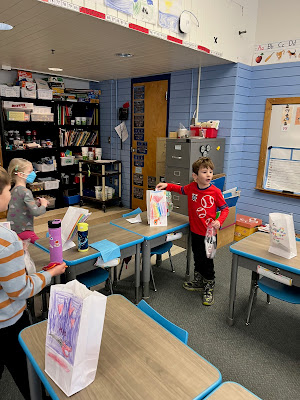Friday, February 14, 2025
Friday, February 7, 2025
Math: Numbers to 99
Literacy: Closed Syllables, Vowel Teams, and Writing About the Sun and Moon
Word Study: Students are learning about different syllable types during word study (closed syllables have a short vowel and are closed in by one or more consonants.) Vowel teams will be introduced shortly, include: ai, ay, ee, ea, ey, oi, oy. Please practice the following heart words at home with your child: say, says, see, between, each. During fluency practice we continue to work on reading with accuracy and prosody (expression.)
EL: During our Literacy block students continue to reflect on where the sun and moon appear in the sky and what happens when the sun and moon are at different places in the sky. We are reading What the Sun Sees and What the Moon Sees by Nancy Tafuri to understand the content as readers and then again as a mentor text to study the author’s craft to begin narrative writing about the topic. The guiding question that we are investigating is, How do authors use their knowledge and observations to write a story?





















